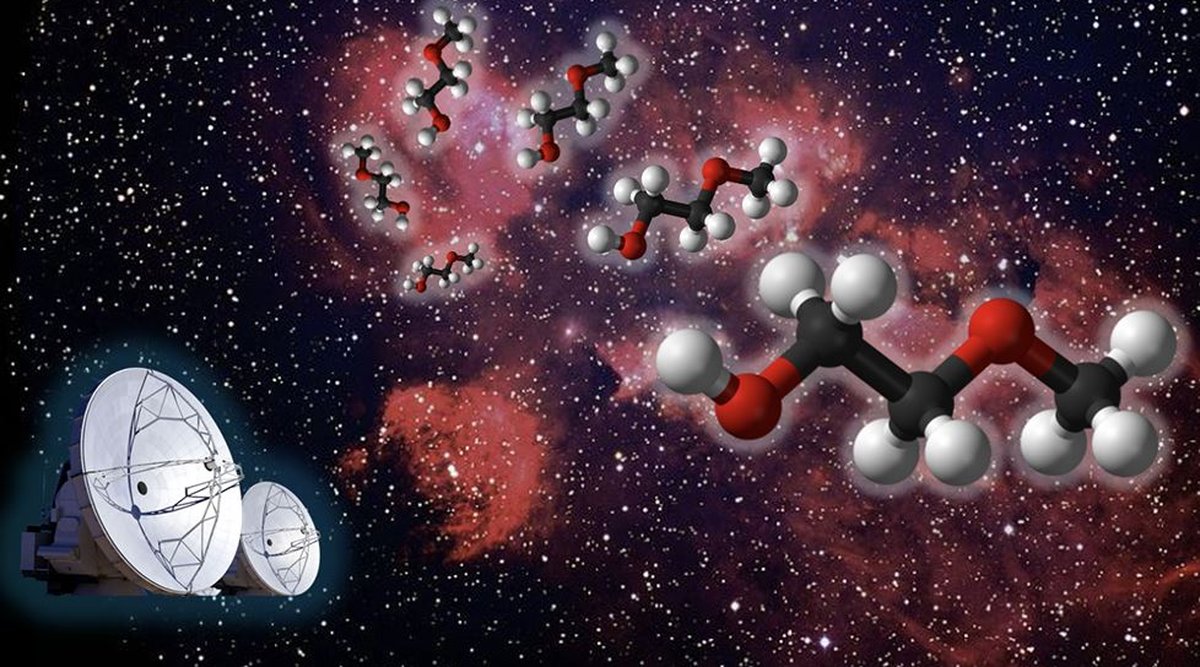A group of researchers from MIT and other institutions describe the detection of a chemical molecule in space in an article published in the scientific journal The Astrophysical Journal Letters. The molecule, called 2-methoxyethanol (CH3OCH2CH2OH), was discovered in a star-forming region called the Cat’s Paw Nebula (NGC 6334I).It is located approximately 40 light years from Earth.
Because it has 13 atoms: three carbon, eight hydrogen and two oxygen, scientists claim that it is one of the largest molecules ever found in space. While on Earth 2-methoxyethanol is considered a chemical solvent that can be toxic to human health, in space it may be one of the properties responsible for the formation of stars and planets.
According to the authors of the article, a number of “methoxy” type molecules have already been found in space, including dimethyl ether, methoxymethanol, ethyl methyl ether. But, 2-methoxyethanol is one of the largest and most complex ever observed; Only six molecules detected in the Solar System have more atoms.
“Our group is trying to understand what molecules are present regions of space where stars and solar systems will eventually form. This allows us to understand how chemistry evolves along with the process of star and planet formation. We do this by observing the spin spectra of molecules, the unique light patterns they emit as they move through space,” McGuire group graduate student and lead author Zachary T.P. Fried said in an official statement.
Zachary TP Fried, who is still making an official statement, explains: “These standards are fingerprints (barcodes) of molecules. “To detect new molecules in space, we must first have an idea of what molecule we want to look for, then we can record its spectrum in the laboratory on Earth, and finally we can look for that spectrum in space using telescopes.”
New molecule in space
The group used radio telescope observations to detect the molecule, but confirmation was performed using data collected by the Atacama Large Millimeter/submillimeter Array (ALMA). The team notes that continuous observation of molecules allows us to advance knowledge about the efficiency of these groups of atoms in space and thus understand how they are produced in this extreme environment.
It is important to emphasize that the basis of the research is the use of a machine learning model responsible for recommending the search for 2-methoxyethanol in space. The study shows that discovery could help scientists better understand complexity Chemistry in the space environment.
“Ultimately, we observed 25 rotational 2-methoxyethanol lines that aligned with the observed molecular signal (barcode matched!) towards NGC 6334I, thus allowing the confident detection of 2-methoxyethanol in this source. We also found this molecule in IRAS 16293-2422B but not Because we detected it in NGC 6334I, we have a unique opportunity to analyze how the different physical conditions of these two sources may affect the chemistry that may occur,” Fried said.
Did you like the content? Stay up to date with more news at TecMundo. If you wish, take the opportunity to discover what the eureka moment of ‘quantum superchemistry’ is.
Source: Tec Mundo
I’m Blaine Morgan, an experienced journalist and writer with over 8 years of experience in the tech industry. My expertise lies in writing about technology news and trends, covering everything from cutting-edge gadgets to emerging software developments. I’ve written for several leading publications including Gadget Onus where I am an author.













